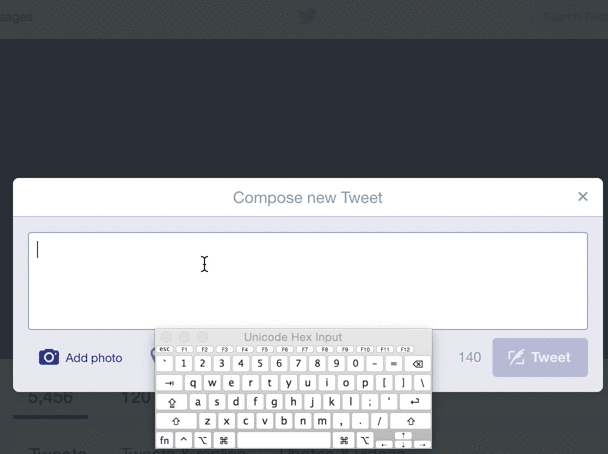The Big List of Naughty Strings is an evolving list of strings which have a high probability of causing issues when used as user-input data. This is intended for use in helping both automated and manual QA testing; useful for whenever your QA engineer walks into a bar.
Even multi-billion dollar companies with huge amounts of automated testing can't find every bad input. For example, look at what happens when you try to Tweet a zero-width space (U+200B) on Twitter:
Although this is not a malicious error, and typical users aren't Tweeting weird unicode, an "internal server error" for unexpected input is never a positive experience for the user, and may in fact be a symptom of deeper string-validation issues. The Big List of Naughty Strings is intended to help reveal such issues.
blns.txt consists of newline-delimited strings and comments which are preceded with #. The comments divide the strings into sections for easy manual reading and copy/pasting into input forms. For those who want to access the strings programmatically, a blns.json file is provided containing an array with all the comments stripped out (the scripts folder contains a Python script used to generate the blns.json).
Feel free to send a pull request to add more strings, or additional sections. However, please do not send pull requests with very-long strings (255+ characters), as that makes the list much more difficult to view.
Likewise, please do not send pull requests which compromise manual usability of the file. This includes the EICAR test string, which can cause the file to be flagged by antivirus scanners, and files which alter the encoding of blns.txt. Also, do not send a null character (U+0000) string, as it changes the file format on GitHub to binary and renders it unreadable in pull requests. Finally, when adding or removing a string please update all files when you perform a pull request.
The Big List of Naughty Strings is intended to be used for software you own and manage. Some of the Naughty Strings can indicate security vulnerabilities, and as a result using such strings with third-party software may be a crime. The maintainer is not responsible for any negative actions that result from the use of the list.
Additionally, the Big List of Naughty Strings is not a fully-comprehensive substitute for formal security/penetration testing for your service.
Various implementations of the Big List of Naughty Strings have made it to various package managers. Those are maintained by outside parties, but can be found here:
Please open a PR to list others.
Max Woolf (@minimaxir)
- June 10, 2015 [Hacker News]: Show HN: Big List of Naughty Strings for testing user-input data
- August 17, 2015 [Reddit]: Big list of naughty strings.
- February 9, 2016 [Reddit]: Big List of Naughty Strings
- January 15, 2017 [Hacker News]: Naughty Strings: A list of strings likely to cause issues as user-input data
- January 16, 2017 [Reddit]: Naughty Strings: A list of strings likely to cause issues as user-input data
- November 16, 2018 [Hacker News]: Big List of Naughty Strings
- November 16, 2018 [Reddit]: Naughty Strings - A list of strings which have a high probability of causing issues when used as user-input data
MIT

